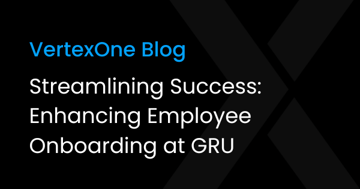
Our lives run on water. It is hard to imagine a day without a steady flow and luckily, in America it is rare we have to consider the possibility. For that security, we must be thankful for the hard-working water utility professionals that spend their days ensuring we have continued access to safe and reliable drinking water. These professionals play a vital role in protecting public health. And for this reason, maintaining a consistent and reliable workforce is incredibly crucial. Thus, a substantial wave of impending retirements in an industry facing recruiting challenges should be cause for concern.
It is projected that in the next 10 years, 37 percent of the water utility workers will retire. This is a substantial percentage of the workforce needing to be replenished. As a result, utility senior management must be prepared to do one of two things: do more with less and/or implement programs that will help them to attract and recruit young talent to their organization in order to meet current and future needs.
Option 1: Doing more with less
As senior management strategizes, they must consider their internal resources. The challenge to replace retirees, will acutely affect smaller utilities, which have fewer resources to recruit employees and to provide professional development training once hired. Ultimately, these utilities need to accept the challenge to accomplish their work with fewer labor resources. How can they do such a thing? By implementing solutions that digitize and automate previously laborious, manual processes, utilities are able to do more with fewer people.
One prime area prone for improvement is a utility's leak identification and management process. Many utilities report spending hours on end manually monitoring consumption data to identify customer leaks and then communicating alerts to their customers. One utility we talked to reported spending 1 full-time employee (FTE) day per week on just mailing leak alerts to their customers. Conversely, WaterSmart's leak detection, alerting and resolution platform automatically identifies leaks based upon pre-determined parameters and sends a personalized leak alert to the customer by mail, e-mail, SMS text message, or automated voice call. By implementing the WaterSmart solution, the Village of Glenview, IL reports saving 10 hours of staff time per week. That is valuable time back in their week the team can use to fill any gaps left behind by retiring colleagues.
Option 2: Attracting and recruiting young talent to the water industry
The EPA, states, and industry organizations are working to promote careers in the water sector with campaigns like Work for Water in an attempt to build interest and recruit fresh new talent. However, building interest amongst millennials and generation z workers may be difficult in a historically 'behind the times' industry. A recent survey found that 91 percent of Generation Z, the generation that’s just beginning to enter the workforce, has said that technological sophistication would impact their interest in working at a company. This is a huge revelation, which suggests that companies, who lag behind technologically, are missing out on the upcoming future talent.
Adapting to the digital transformation of water utilities will be a critical component of recruiting young talent. WaterSmart's 120+ utility partners and other utility leaders that embrace the value of software solutions and the technological evolution will be the first to reap the rewards of a bright, youthful, and innovative workforce prepared to tackle the many challenges that stand in front of the water industry.
The time is now for senior management to strategize and prepare to answer those “Hey, who is in charge of…” and "Does anyone have time to handle..." questions. As you start to define a plan around your shifting workforce, WaterSmart is ready to help with time saving, automated solutions and industry expertise. Visit https://www.watersmart.com/get-a-demo/ to learn more today.



